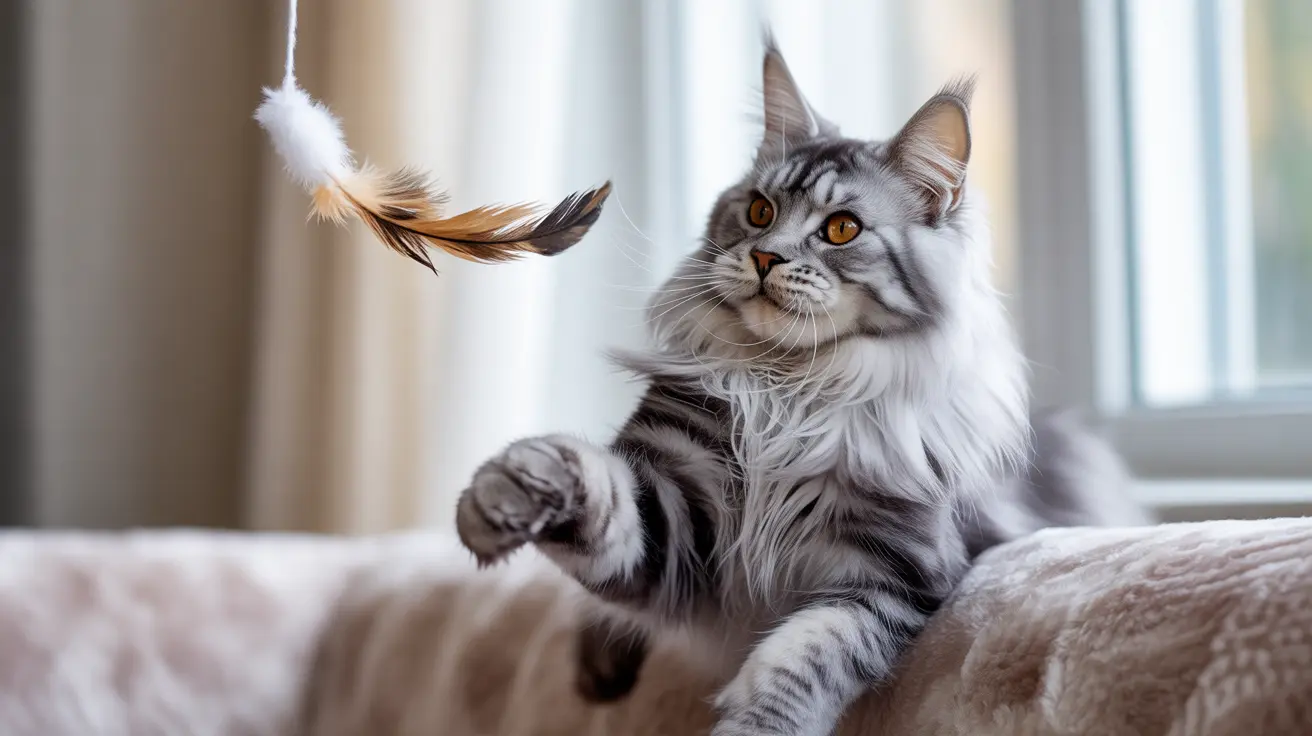Understanding Cat Vision Range and Clarity
Cats have a clear vision range of approximately 20 feet (6 meters). Beyond this distance, objects become increasingly blurry to them. This is quite different from humans, who can typically see objects clearly at distances of 100-200 feet. A cat's visual acuity is generally measured between 20/100 and 20/200, meaning they need to be 20 feet away to see what a person with normal vision can see at 100-200 feet.
Interestingly, cats also struggle with extremely close objects, having difficulty focusing on anything closer than 10 inches (25 cm). This explains why your cat might seem to miss treats right under their nose!
The Unique Features of Cat Eyes
Cats' eyes are specially adapted for their hunting lifestyle. They possess several unique features that enhance their vision in specific ways:
- A reflective layer called the tapetum lucidum that amplifies available light
- Vertically-oriented pupils that can dilate dramatically in low light
- A wider visual field of 200 degrees (compared to humans' 180 degrees)
- More rod cells in their retinas for enhanced motion detection
Night Vision and Motion Detection
While cats may not see as far as humans, they excel in low-light conditions. Their eyes can function with just one-sixth to one-eighth of the light required by human eyes. This superior night vision, combined with exceptional motion detection abilities, makes them formidable hunters during dawn and dusk.
Color Perception and Visual Processing
Cats see the world in a more muted color palette than humans do. They are dichromats, meaning they primarily see blues and greens, while reds and pinks appear grayish. This limited color vision is a trade-off that allows for better performance in low-light conditions.
Practical Implications for Cat Owners
Understanding your cat's visual capabilities can help you create a more enriching environment:
- Place cat trees and perches within 20 feet of interesting viewing spots
- Use motion-based toys rather than static ones
- Ensure adequate lighting for aging cats
- Don't rely on color-based cues for training or play
Frequently Asked Questions
How far can cats see clearly compared to humans?
Cats can see clearly up to about 20 feet, while humans can see clearly up to 100-200 feet. Cats' visual acuity is typically 20/100 to 20/200, meaning their distance vision is significantly less sharp than humans'.
Why do cats see better in low light but have blurry vision at long distances?
Cats have more rod cells in their retinas, which excel at gathering light and detecting motion, but provide less detail than cone cells. Their eyes also have the tapetum lucidum, which reflects light back through the retina, enhancing night vision at the expense of sharp distance vision.
How does a cat's visual field and night vision help with hunting?
Cats have a wider visual field (200 degrees) and superior night vision, allowing them to detect prey movement in low light conditions. They can see with just one-sixth of the light humans need, making them excellent crepuscular hunters.
What colors do cats see, and why do their color perceptions differ from humans?
Cats are dichromats, primarily seeing blues and greens, while reds appear as shades of gray. This is because they have fewer types of cone cells than humans, trading color vision for better night vision capabilities.
Why do cats struggle to focus on objects very close or very far away?
Cats have less flexible eye lenses and weaker ciliary muscles compared to humans, making it difficult for them to adjust focus between near and far objects. They struggle with objects closer than 10 inches and become increasingly blurry beyond 20 feet.






